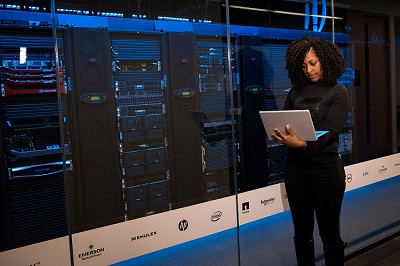Home > Columns > CRM Columns
Best Practices for Securing the Cloud
Contributed Article by Jennifer Page

The cloud provides benefits to today’s businesses,
especially in the post-pandemic world where more employees are working from
home. Whether a business has all employees in the office, is trying out a
hybrid model, or is completely virtual, the cloud makes it possible for
employees to work. When storing data in the cloud, however, it must be secure.
Businesses can use the following best practices to start securing the cloud and
preventing hacks or other attacks that can compromise vital data.
Encrypt Data in the Cloud
One of the biggest concerns for cloud supply
chain security is the ability of a hacker to access the data. All data in
the cloud should be encrypted to protect it from theft or destruction. While a
hacker can still delete the data, if it is encrypted, they may not be able to
tell what’s important and what’s not. By the time the hack is detected and
stopped, it may be possible to save the data because of this. Look into
encryption for every part of the process, from uploading or downloading data to
keeping it secure while it’s stored in the cloud.
Establish Policies for Deleting Data
Deleting data seems easy enough, but it could lead to
vulnerabilities that hackers can use to access the data. Have a policy in place
that establishes what happens when data does need to be deleted. This can also
help ensure crucial data isn’t accidentally deleted or that it is recoverable
for a short period of time after it has been deleted. It is a good idea to make
sure the data is still secure if it can be recovered for a period of time after
the deletion to avoid it being accessed by an unauthorized person.
Control Who Accesses the Data
Data in the cloud shouldn’t be accessible by everyone that
works for the business. Only provide access to those who require it and have
proper authorization. It is important to create a list of who can access the
data and any limitations on the access. When employees need access to different
types of data, create access options that keep the remainder of the data
secure, only allowing employees to see what they’re authorized to see. This
limits the number of people able to view the data, which can help make it more
secure.
Monitor for Security Threats
Constant monitoring is needed for data stored in the cloud.
There are a number of
security challenges businesses should know about and plan for when securing
data in the cloud. Proper monitoring can help spot any risks as soon as they
appear, which can mean stopping them before any data is compromised. Even
smaller businesses will want to monitor for security threats, as hackers will
try to gain access to private information no matter how large or small a
business might be, especially if the business is lax on monitoring and it’s
easier to access the data.
Try Penetration Testing
Can hackers get into the cloud through a loophole and access
the data? This is a concern today, but there are techniques to help deal with
it. Conduct penetration
testing regularly to find the loopholes that could allow for unauthorized
access and take the necessary steps to correct them. Penetration testing should
be done on a regular basis to help discover potential risks as well as any time
there are major updates to the cloud, to the security for the cloud, or to when
and how employees can access the data.
Provide Training for Employees
Proper training for employees on digital security is vital.
Mistakes that may seem minor, like reusing a password or picking out a password
that is easily guessed, can lead to major issues if the cloud is able to be
accessed by someone who doesn’t have the proper authorization. While initial
employee training may cover security risks and how to prevent them, this is
something that should be covered regularly. Meetings done on a regular basis or
training materials that must be reviewed occasionally are great ways to
continue to educate employees on cloud security and what they can do to keep
the data more secure.
While the cloud is a fantastic resource for businesses and
provides numerous benefits, it does come with risks. Businesses must be aware
of these risks and take an active role in preventing anything from happening.
Though the cloud provider will have security measures in place that can help
protect the data, it is up to the business to check everything and close as
many loopholes as possible to prevent viruses or hackers from accessing data.
Take the time now to review the security of the cloud and
see what changes may need to be made to make everything more secure. Use the
information here to make sure your business is following best practices and
look into help that may be available to keep the cloud more secure now and in
the future.